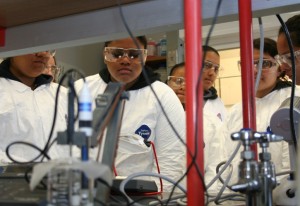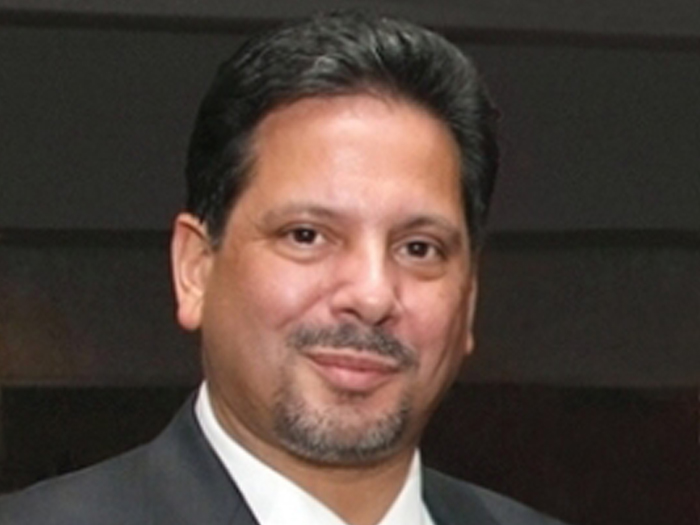
Students from Curtis High School had the unique opportunity to perform some hands-on water quality research at the College of Staten Island.
A group of students from Curtis High School recently had a unique opportunity to perform some hands-on estuarine water quality research, thanks to a $25,000 grant from Con Edison that the College of Staten Island (CSI) received last February. The program, which concluded earlier this month, provided a day’s-worth of science instruction for a total of 100 underserved high school students from Curtis High School and IS 49 who came to the College in smaller groups.
[flowplayer src=’https://csitoday.com/wp-content/uploads/video-player/assets/video/ConEd_Spring_2011-web.mov’ width=320 height=180 splash=’https://csitoday.com/wp-content/uploads/video-player/assets/images/ConEd_Spring_2011.png’] The students began their day with a field trip to Great Kills Park, where they learned about regional estuary issues and worked in groups collecting samples. They also engaged in water quality monitoring, including measuring parameters such as dissolved oxygen, pH, temperature, salinity, and conductivity. The next stop was the CSI campus where they had the opportunity to tour the Interstate Environmental Commission’s laboratory and perform further laboratory analyses on the samples they collected at Great Kills Park.
After a lecture from Geology Professor Alan Benimoff about the role of Geographic Information Systems (GIS) in interpreting and analyzing environmental data, the students capped off their trip to the College with lunch in Building 6S.
The students certainly seemed to have a great time, especially as they conducted research in the lab.
Dulce, a sophomore at Curtis, said, “I felt very excited. Learning things is always nice. I enjoyed the hands-on research.”
Another Curtis sophomore, Christopher, agreed, “I feel very blessed and very happy that I was given the opportunity to come and share this with my classmates and have a fun-filled day–do some science….”
Jackie, who is also a sophomore at Curtis, was also very appreciative of the chance to take part in the program, stating, “I feel that it’s a privilege because not every student in my school got to come and see how we record the data that we did and how we go to the lab and look at the maps.”
Elise Oliveri, the students’ Earth Science teacher, shared her impressions of what she observed. “I saw the students actively participating in real-time science collection, something that they don’t usually get a chance to do. This is great. They were absorbed. They were excited. Then they came back to CSI and processed their samples and saw what science really is. They saw the engineering behind what they read about and learn about.”
Oliveri added that the experience benefited her students because “It creates active, participating students in the science community. They need to have a little more hands-on experience besides our labs that we do in the classroom. I think that it really will continue to grasp their interest in the environmental aspects that are so important to future scientists.”
While the Curtis students were working in the lab, Con Edison’s Director of Public Affairs Mark Irving dropped in to observe the work of students from Curtis High School who were benefiting from Con Edison’s generous grant. “I was very impressed with how engaged the students were,” he said. “I talked to a couple of them and they really liked what they were learning…That’s something that is encouraging to hear from students that they really liked the kind of experimentation and learning and environmental science that is being disseminated to them….”
Donna Gerstle, Director of the College’s Center for Environmental Science, summed up the program’s significance. “I think it’s important that we reach out to the community and we tell, especially the high schools and the junior high schools, that we exist here at the College of Staten Island, the Environmental Science Master’s program, and the Center for Environmental Science that houses environmental science research on Staten Island. We would like to introduce students who are underserved in the community to the importance of doing environmental research, especially because Staten Island is an island community, to teach them about their water, how clean or dirty it is, and how important water is for people who live in an island community, but most importantly that environmental science is one of the largest issues today in terms of global, social, and scientific research.”
After commenting that many of the students said during lunch that they wanted to become environmental scientists, Gerstle talked about the importance of the collaboration that has made this program a reality. “I think that the partnership between the Center for Environmental Science here at the College of Staten Island and the Interstate Environmental Commission, which is a tri-state water pollution agency is important and we would love to be able to continue this kind of outreach to the community, thanks to the generosity of Con Edison.”

![[video] Con Edison Brings Science to Life for Underserved Island High Schoolers](https://csitoday.com/wp-content/uploads/2011/05/curtis_students_053111.jpg)













